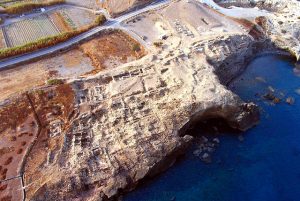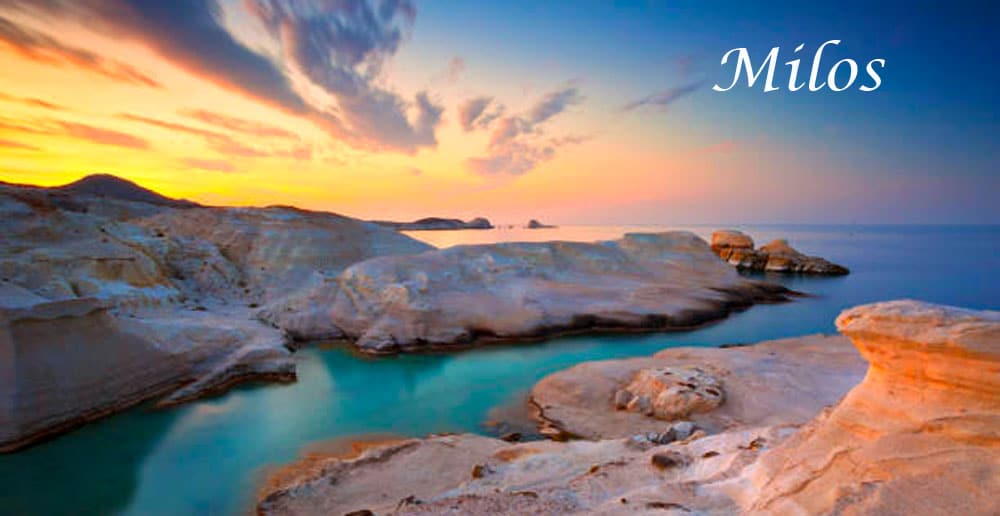The Archaeological Site of Phylakopi in Milos

In this case the wealth of the island is obsidian, a volcanic rock with a vitreous form, which due to its composition and durability was used during this period to create tools. Thus, through its mining, Phylakopi managed to become an important commercial and cultural center. Throughout its tenure, it gained strength, erected Cyclopean walls against invaders, was destroyed and rebuilt three times.
The first samples of tools as well as waste from processing obsidian cores, which after analyzes proved to come from Milos, were located in the Fraghthi cave of the Argolis, in a layer dating to the 11th millennium BC. (Upper Paleolithic period). While in the same cave, tools dating back to the Mesolithic (around 7250 BC) were also found. These findings were the first evidence for the existence of navigation in the Aegean and among the oldest samples that testify to navigation in the Eastern Mediterranean.
As a reference, the settlement itself, the successive phases of habitation of Phylakopi as well as Agia Irini in Kea help us to better understand the Cycladic civilization due to their continuity. A somewhat paradoxical element is the location in which the city was built, as it is not close to the obsidian “sources” and the main port but close to the coast, while the surrounding area is not arable.
The settlement, as mentioned above, began to be inhabited as early as 3000 BC. while it was abandoned in 1100 BC. having gone through three phases. In the pre-settlement phase (3200 BC – 2300 BC) during which no architectural remains are mentioned. In the period of the first city (2300-2000 BC) during which the settlement has an area of about 200 meters (large for the data of that time in the Aegean) and does not have an organized layout, however it presents a relatively organized cemetery. At the same time, during that period, obsidian exports multiplied, resulting in the full commercial prosperity of Milia.
An earthquake shows the destruction of the first city and marks the beginning of the second. During the period of the second city (2000-1600 BC) walls were built to protect against any raids, the tombs are now outside the walls, while the houses are located in a staggered arrangement on the hill. In this period, the ceramic art developed especially with clear Minoan influences and the commercial relations of the Milesians with various regions of Greece and especially with Crete were further developed.
This period ends with the destruction of Phylakopi, probably by raiders. With the creation of the third settlement, the 3rd phase of the city begins (1600 BC-1110 BC). During this last period Phylakopi presents an organized, complex layout plan, fortification with high Cyclopean walls over 6 meters and larger houses, some of which may have been two-storeyed. At the beginning of this period the influence of the Minoan culture was strong, parts of a sign with an incised decoration of Linear Script A have been identified.
Towards the end of the 12th century bc the Mycenaean element prevails in the settlement. Around 1400 BC, a mega-shaped building of Mycenaean type with many rooms and a sanctuary with two rooms is built.
